Daoyi Dong
Listwise Preference Alignment Optimization for Tail Item Recommendation
Jul 03, 2025Abstract:Preference alignment has achieved greater success on Large Language Models (LLMs) and drawn broad interest in recommendation research. Existing preference alignment methods for recommendation either require explicit reward modeling or only support pairwise preference comparison. The former directly increases substantial computational costs, while the latter hinders training efficiency on negative samples. Moreover, no existing effort has explored preference alignment solutions for tail-item recommendation. To bridge the above gaps, we propose LPO4Rec, which extends the Bradley-Terry model from pairwise comparison to listwise comparison, to improve the efficiency of model training. Specifically, we derive a closed form optimal policy to enable more efficient and effective training without explicit reward modeling. We also present an adaptive negative sampling and reweighting strategy to prioritize tail items during optimization and enhance performance in tail-item recommendations. Besides, we theoretically prove that optimizing the listwise preference optimization (LPO) loss is equivalent to maximizing the upper bound of the optimal reward. Our experiments on three public datasets show that our method outperforms 10 baselines by a large margin, achieving up to 50% performance improvement while reducing 17.9% GPU memory usage when compared with direct preference optimization (DPO) in tail-item recommendation. Our code is available at https://github.com/Yuhanleeee/LPO4Rec.
Mixture-of-Experts Meets In-Context Reinforcement Learning
Jun 05, 2025Abstract:In-context reinforcement learning (ICRL) has emerged as a promising paradigm for adapting RL agents to downstream tasks through prompt conditioning. However, two notable challenges remain in fully harnessing in-context learning within RL domains: the intrinsic multi-modality of the state-action-reward data and the diverse, heterogeneous nature of decision tasks. To tackle these challenges, we propose \textbf{T2MIR} (\textbf{T}oken- and \textbf{T}ask-wise \textbf{M}oE for \textbf{I}n-context \textbf{R}L), an innovative framework that introduces architectural advances of mixture-of-experts (MoE) into transformer-based decision models. T2MIR substitutes the feedforward layer with two parallel layers: a token-wise MoE that captures distinct semantics of input tokens across multiple modalities, and a task-wise MoE that routes diverse tasks to specialized experts for managing a broad task distribution with alleviated gradient conflicts. To enhance task-wise routing, we introduce a contrastive learning method that maximizes the mutual information between the task and its router representation, enabling more precise capture of task-relevant information. The outputs of two MoE components are concatenated and fed into the next layer. Comprehensive experiments show that T2MIR significantly facilitates in-context learning capacity and outperforms various types of baselines. We bring the potential and promise of MoE to ICRL, offering a simple and scalable architectural enhancement to advance ICRL one step closer toward achievements in language and vision communities. Our code is available at https://github.com/NJU-RL/T2MIR.
Learning Diverse Natural Behaviors for Enhancing the Agility of Quadrupedal Robots
May 15, 2025Abstract:Achieving animal-like agility is a longstanding goal in quadrupedal robotics. While recent studies have successfully demonstrated imitation of specific behaviors, enabling robots to replicate a broader range of natural behaviors in real-world environments remains an open challenge. Here we propose an integrated controller comprising a Basic Behavior Controller (BBC) and a Task-Specific Controller (TSC) which can effectively learn diverse natural quadrupedal behaviors in an enhanced simulator and efficiently transfer them to the real world. Specifically, the BBC is trained using a novel semi-supervised generative adversarial imitation learning algorithm to extract diverse behavioral styles from raw motion capture data of real dogs, enabling smooth behavior transitions by adjusting discrete and continuous latent variable inputs. The TSC, trained via privileged learning with depth images as input, coordinates the BBC to efficiently perform various tasks. Additionally, we employ evolutionary adversarial simulator identification to optimize the simulator, aligning it closely with reality. After training, the robot exhibits diverse natural behaviors, successfully completing the quadrupedal agility challenge at an average speed of 1.1 m/s and achieving a peak speed of 3.2 m/s during hurdling. This work represents a substantial step toward animal-like agility in quadrupedal robots, opening avenues for their deployment in increasingly complex real-world environments.
Text-to-Decision Agent: Learning Generalist Policies from Natural Language Supervision
Apr 22, 2025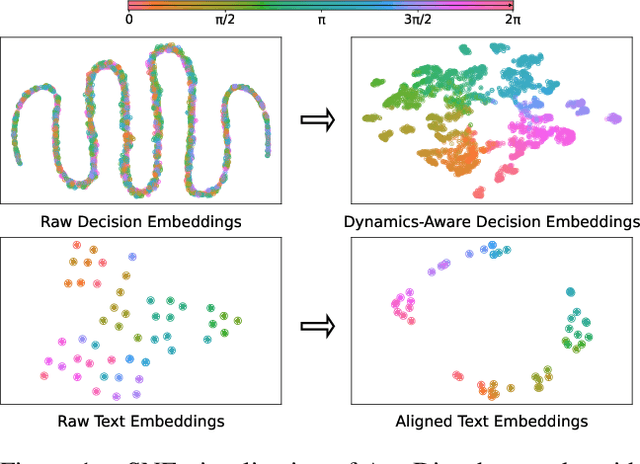

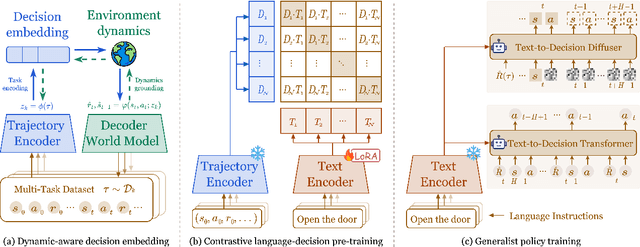

Abstract:RL systems usually tackle generalization by inferring task beliefs from high-quality samples or warmup explorations. The restricted form limits their generality and usability since these supervision signals are expensive and even infeasible to acquire in advance for unseen tasks. Learning directly from the raw text about decision tasks is a promising alternative to leverage a much broader source of supervision. In the paper, we propose Text-to-Decision Agent (T2DA), a simple and scalable framework that supervises generalist policy learning with natural language. We first introduce a generalized world model to encode multi-task decision data into a dynamics-aware embedding space. Then, inspired by CLIP, we predict which textual description goes with which decision embedding, effectively bridging their semantic gap via contrastive language-decision pre-training and aligning the text embeddings to comprehend the environment dynamics. After training the text-conditioned generalist policy, the agent can directly realize zero-shot text-to-decision generation in response to language instructions. Comprehensive experiments on MuJoCo and Meta-World benchmarks show that T2DA facilitates high-capacity zero-shot generalization and outperforms various types of baselines.
Hierarchical and Step-Layer-Wise Tuning of Attention Specialty for Multi-Instance Synthesis in Diffusion Transformers
Apr 14, 2025Abstract:Text-to-image (T2I) generation models often struggle with multi-instance synthesis (MIS), where they must accurately depict multiple distinct instances in a single image based on complex prompts detailing individual features. Traditional MIS control methods for UNet architectures like SD v1.5/SDXL fail to adapt to DiT-based models like FLUX and SD v3.5, which rely on integrated attention between image and text tokens rather than text-image cross-attention. To enhance MIS in DiT, we first analyze the mixed attention mechanism in DiT. Our token-wise and layer-wise analysis of attention maps reveals a hierarchical response structure: instance tokens dominate early layers, background tokens in middle layers, and attribute tokens in later layers. Building on this observation, we propose a training-free approach for enhancing MIS in DiT-based models with hierarchical and step-layer-wise attention specialty tuning (AST). AST amplifies key regions while suppressing irrelevant areas in distinct attention maps across layers and steps, guided by the hierarchical structure. This optimizes multimodal interactions by hierarchically decoupling the complex prompts with instance-based sketches. We evaluate our approach using upgraded sketch-based layouts for the T2I-CompBench and customized complex scenes. Both quantitative and qualitative results confirm our method enhances complex layout generation, ensuring precise instance placement and attribute representation in MIS.
T$^3$-S2S: Training-free Triplet Tuning for Sketch to Scene Generation
Dec 18, 2024Abstract:Scene generation is crucial to many computer graphics applications. Recent advances in generative AI have streamlined sketch-to-image workflows, easing the workload for artists and designers in creating scene concept art. However, these methods often struggle for complex scenes with multiple detailed objects, sometimes missing small or uncommon instances. In this paper, we propose a Training-free Triplet Tuning for Sketch-to-Scene (T3-S2S) generation after reviewing the entire cross-attention mechanism. This scheme revitalizes the existing ControlNet model, enabling effective handling of multi-instance generations, involving prompt balance, characteristics prominence, and dense tuning. Specifically, this approach enhances keyword representation via the prompt balance module, reducing the risk of missing critical instances. It also includes a characteristics prominence module that highlights TopK indices in each channel, ensuring essential features are better represented based on token sketches. Additionally, it employs dense tuning to refine contour details in the attention map, compensating for instance-related regions. Experiments validate that our triplet tuning approach substantially improves the performance of existing sketch-to-image models. It consistently generates detailed, multi-instance 2D images, closely adhering to the input prompts and enhancing visual quality in complex multi-instance scenes. Code is available at https://github.com/chaos-sun/t3s2s.git.
Online Planning of Power Flows for Power Systems Against Bushfires Using Spatial Context
Apr 20, 2024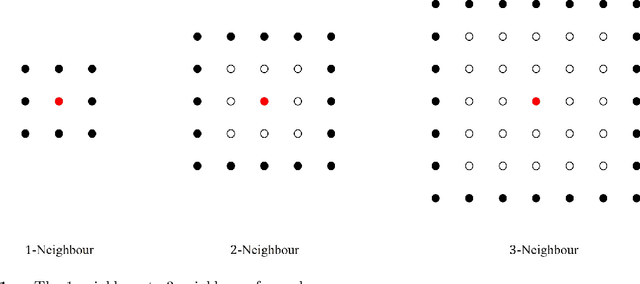

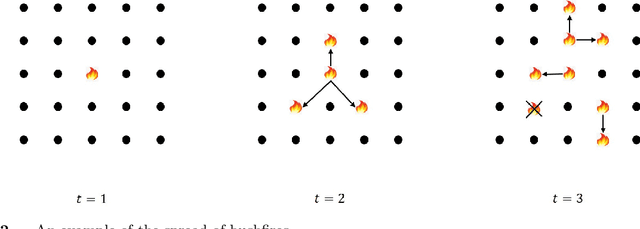
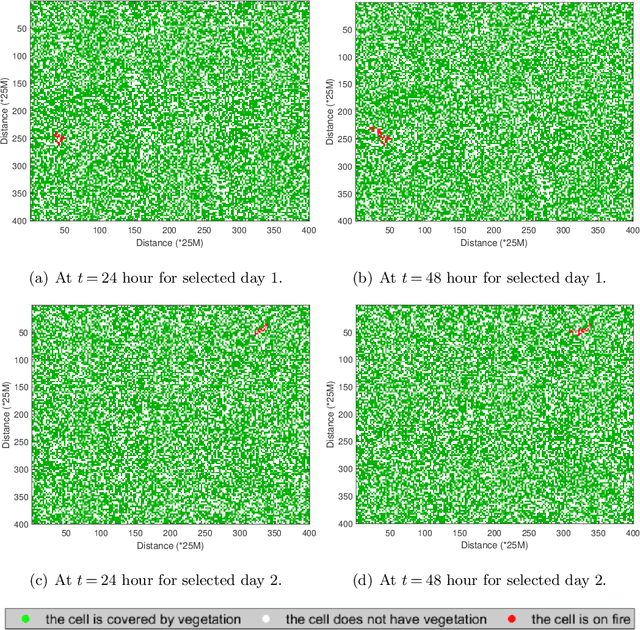
Abstract:The 2019-20 Australia bushfire incurred numerous economic losses and significantly affected the operations of power systems. A power station or transmission line can be significantly affected due to bushfires, leading to an increase in operational costs. We study a fundamental but challenging problem of planning the optimal power flow (OPF) for power systems subject to bushfires. Considering the stochastic nature of bushfire spread, we develop a model to capture such dynamics based on Moore's neighborhood model. Under a periodic inspection scheme that reveals the in-situ bushfire status, we propose an online optimization modeling framework that sequentially plans the power flows in the electricity network. Our framework assumes that the spread of bushfires is non-stationary over time, and the spread and containment probabilities are unknown. To meet these challenges, we develop a contextual online learning algorithm that treats the in-situ geographical information of the bushfire as a 'spatial context'. The online learning algorithm learns the unknown probabilities sequentially based on the observed data and then makes the OPF decision accordingly. The sequential OPF decisions aim to minimize the regret function, which is defined as the cumulative loss against the clairvoyant strategy that knows the true model parameters. We provide a theoretical guarantee of our algorithm by deriving a bound on the regret function, which outperforms the regret bound achieved by other benchmark algorithms. Our model assumptions are verified by the real bushfire data from NSW, Australia, and we apply our model to two power systems to illustrate its applicability.
Learning Informative Latent Representation for Quantum State Tomography
Sep 30, 2023Abstract:Quantum state tomography (QST) is the process of reconstructing the complete state of a quantum system (mathematically described as a density matrix) through a series of different measurements. These measurements are performed on a number of identical copies of the quantum system, with outcomes gathered as frequencies. QST aims to recover the density matrix and the corresponding properties of the quantum state from the measured frequencies. Although an informationally complete set of measurements can specify quantum state accurately in an ideal scenario with a large number of identical copies, both measurements and identical copies are restricted and imperfect in practical scenarios, making QST highly ill-posed. The conventional QST methods usually assume adequate or accurate measured frequencies or rely on manually designed regularizers to handle the ill-posed reconstruction problem, suffering from limited applications in realistic scenarios. Recent advances in deep neural networks (DNNs) led to the emergence of deep learning (DL) in QST. However, existing DL-based QST approaches often employ generic DNN models that are not optimized for imperfect conditions of QST. In this paper, we propose a transformer-based autoencoder architecture tailored for QST with imperfect measurement data. Our method leverages a transformer-based encoder to extract an informative latent representation (ILR) from imperfect measurement data and employs a decoder to predict the quantum states based on the ILR. We anticipate that the high-dimensional ILR will capture more comprehensive information about quantum states. To achieve this, we conduct pre-training of the encoder using a pretext task that involves reconstructing high-quality frequencies from measured frequencies. Extensive simulations and experiments demonstrate the remarkable ability of the ILR in dealing with imperfect measurement data in QST.
Attention-Based Transformer Networks for Quantum State Tomography
May 09, 2023Abstract:Neural networks have been actively explored for quantum state tomography (QST) due to their favorable expressibility. To further enhance the efficiency of reconstructing quantum states, we explore the similarity between language modeling and quantum state tomography and propose an attention-based QST method that utilizes the Transformer network to capture the correlations between measured results from different measurements. Our method directly retrieves the density matrices of quantum states from measured statistics, with the assistance of an integrated loss function that helps minimize the difference between the actual states and the retrieved states. Then, we systematically trace different impacts within a bag of common training strategies involving various parameter adjustments on the attention-based QST method. Combining these techniques, we establish a robust baseline that can efficiently reconstruct pure and mixed quantum states. Furthermore, by comparing the performance of three popular neural network architectures (FCNs, CNNs, and Transformer), we demonstrate the remarkable expressiveness of attention in learning density matrices from measured statistics.
Auxiliary Task-based Deep Reinforcement Learning for Quantum Control
Feb 28, 2023



Abstract:Due to its property of not requiring prior knowledge of the environment, reinforcement learning has significant potential for quantum control problems. In this work, we investigate the effectiveness of continuous control policies based on deep deterministic policy gradient. To solve the sparse reward signal in quantum learning control problems, we propose an auxiliary task-based deep reinforcement learning (AT-DRL) for quantum control. In particular, we first design a guided reward function based on the fidelity of quantum states that enables incremental fidelity improvement. Then, we introduce the concept of an auxiliary task whose network shares parameters with the main network to predict the reward provided by the environment (called the main task). The auxiliary task learns synchronously with the main task, allowing one to select the most relevant features of the environment, thus aiding the agent in comprehending how to achieve the desired state. The numerical simulations demonstrate that the proposed AT-DRL can provide a solution to the sparse reward in quantum systems, and has great potential in designing control pulses that achieve efficient quantum state preparation.
 Add to Chrome
Add to Chrome Add to Firefox
Add to Firefox Add to Edge
Add to Edge